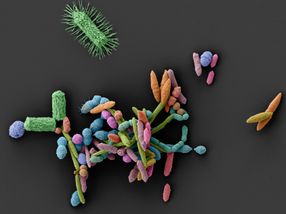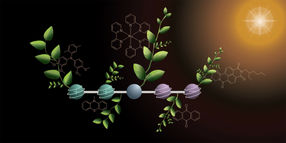First parasitic nematodes reported in biofuel crops
Advertisement
Researchers at the Energy Biosciences Institute (EBI) at the University of Illinois have discovered widespread occurrence of plant-parasitic nematodes in the first reported nematode survey of Miscanthus and switchgrass plants used for biofuels. Lead researcher Tesfamariam Mekete, a U of I post-doctoral research associate, said the team's first step was to identify potential pathogenic nematodes of these top two energy-yielding cellulosic-ethanol feedstock plants.
"Nematodes are a part of our soil systems," Mekete said. "However, when it comes to potential crops for biofuel production, we simply don't know which nematodes are present in these crops and at what levels."
The 2008-09 nematode survey included samples from 37 Miscanthus and 48 switchgrass plots in Illinois, Georgia, Iowa, Kentucky, South Dakota and Tennessee.
All sample sites had at least two nematode species that have been reported to reduce biomass in most monocotyledon hosts. The damaging population thresholds for these nematodes to Miscanthus and switchgrass are still unknown. However, the population densities encountered may present a potential risk to biofuels production when compared with threshold densities reported on other monocotyledon hosts, Mekete said.
Researchers discovered lesion (Pratylenchus), dagger (Xiphinema), needle (Longidorus), lance (Hoplolaimus), stunt (Tylenchorhynchus), spiral (Helicotylenchus), and ring (Criconema) in Miscanthus and switchgrass. These nematodes have previously been reported to cause damage to several plant species such as corn, bent grass, switchgrass and turf grasses.
"The high levels of nematodes found in our survey and the damage symptoms observed in infected roots suggest parasitism may contribute to the decline of biomass production," Mekete said.
Needle nematodes, discovered at high levels in the sandy soils of Havana, Ill., and Georgia, caused visible stunting of lateral roots and destruction of the fibrous root system. Mekete's team hopes to do further research in Havana to study the interaction between this nematode and biomass yield. Researchers are now studying damage thresholds of lesion, root-knot and needle nematodes to Miscanthus and switchgrass under greenhouse conditions. Future studies will include host suitability and population dynamics of the most prevalent nematodes associated with these perennial grasses.
In addition to discovering information on the distribution, presence, abundance and identification of these nematodes, researchers also developed species-specific DNA tests to help identify nematodes so future research can focus on developing control tactics.



























































